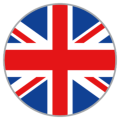Identity’s Guide to Organising an Event: Post-Show Marketing
Marketing plays an important role in all stages of the event – before, during and after the show. Indeed, it’s the latter that is arguably the most important segment – after all, the entire point of an event is to generate awareness, interest and (ideally) prospective customers for your products and services, and it’s at this stage that you will follow up on these enquiries to generate business.
This might seem obvious, but studies have shown that as many as 75% of trade show leads are never contacted. To make sure that doesn’t happen, here’s Identity’s seven-part plan for post-show marketing.
1. COLLATE & ANALYSE YOUR VISITOR DATA
If your event was a success you will ideally have collected a lot of visitor data. Depending on which system you used – light-pen, badge scanner or pen and paper – you should immediately begin collating all information received at your stand into your CRM or, at a minimum, in a well-organised spreadsheet. This should include all visitor details such as name, company, telephone number, email address, website, nature of enquiry, and so on. Analyse the data and look for trends, grouping the visitors into warmth of lead (hot, warm and cold – a colour-coded system works well here as it stresses urgency and quality) to send on to your sales team.
2. GET ON THE PHONES
Despite some significant advances in online technology over the past decade or so, the telephone remains the most effective way to convert prospects into customers. As soon as possible you should begin calling visitors who were interested in your business to arrange face-to-face meetings and product demonstrations. Note that research shows that you should be prepared to make contact between five and twelve times (across all mediums) before a lead converts, so strive to make the gap between meeting someone and speaking to them on the phone as small as possible. Otherwise, a competitor could close the deal while you are still basking in the glory of your show!
3. EMAIL
After the phone email is the best way to generate new business with a conversion rate significant higher than both search and social media. Follow-up any new leads with an email thanking them for visiting your stand and sending over any materials that they have requested. You likely will have acquired a large number of new email addresses that you can now add both to your CRM (as above) and your newsletter database. Be sure to tag these new database entries with details on the show where you met so that you can implement targeted email marketing campaigns in the future.
4. PRIZES & GIFTS
Did you have a competition at your show? If the prizes weren’t given out at the event (and ideally they should have been to maximise publicity) now is the time to be sending everything out to your winners. If other non-winning entrants or stand visitors caught your eye and would make excellent business contacts, consider sending out gifts with an introductory letter that can later be followed up with a phone call.
5. SOCIAL MEDIA
While the telephone and email are better for generating sales, social media excels at raising awareness and maintaining engagement, interest and buzz after your event. You should immediately being re-packaging show data into social media copy, and generating fresh content such as images, video and infographics. Make sure that you create content that is also informative to non-attendees – it’s excellent for event marketing purposes and will encourage people to sign up for next year.
6. RE-TARGETING
Increasingly the best way to convert a lead into a customer is to use multiple touch points, with marketing messages across a variety of platforms (email, social media, cost per click ads) all “touching” the customer in some way. Collectively, these touch points enrich the customer experience with your brand – this makes it seem like you’re suddenly “everywhere”, driving awareness and building trust. One of the most effective ways to do this is through the use of re-targeting advertisements – build a customised audience of leads from the emails you collected at your show or from anyone who visited your event website and then re-expose them to the products and services in which they have already shown interest. The best part about re-targeting is that because the leads are already warm your messaging can be significantly more focused and on-point.
7. ASK FOR FEEDBACK
Use polls and surveys to collect feedback from your visitors – this can be done via email or through social media. Be specific about what you’re asking of them. Good questions include feedback about their experience at your stand, how it compared to other exhibitors, their thoughts on the show itself, will they be returning next year, etc. Think carefully about what to ask and don’t overwhelm – about ten to twelve questions is enough. Track and plot all feedback and learn from the responses – what can you do to improve your event for next year?
CONCLUSION
For optimum results exhibitors should prepare as many of these items as far in advance of the show as possible. This allows for smooth implementation of the post-show marketing campaign as soon as the event finishes – and, ideally, while the show is still happening. The gap between an enquiry and a follow-up should be a small as possible to maximise conversion rates, so plan ahead and have all of your materials ready well before the start of the event.








